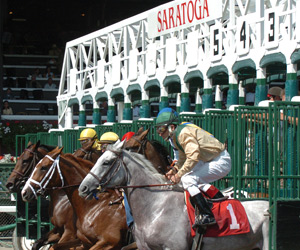
![]() The first thing that came to my mind when thinking of a picture of an animal was Tony the Tiger. I will be drawing on Berger’s notion of humans anthropomorphization and viewing tigers as “Tiger”. Tony the Tiger is the 100% fictitious “front-man” for General Mills’ cereal Frosted Flakes, but the message he sends to kids and the comparisons I see between what he represents and Berger’s whole idea of animals of the mind, happens to be anything but fictitious.
The first thing that came to my mind when thinking of a picture of an animal was Tony the Tiger. I will be drawing on Berger’s notion of humans anthropomorphization and viewing tigers as “Tiger”. Tony the Tiger is the 100% fictitious “front-man” for General Mills’ cereal Frosted Flakes, but the message he sends to kids and the comparisons I see between what he represents and Berger’s whole idea of animals of the mind, happens to be anything but fictitious.
In this picture, Tony wears an embroidered ascot, has a very fit physique and a grin ear to ear. Everything about this image screams friendly, approachable character.
Every kid knows Tony the Tiger, and his catchphrase “they’reeeee greattttt!” Before reading Berger, I had thought of Tony to be just a funny, happy-go-lucky cartoon character. I venture to say, not only is Tony’s anthropomorphization from Berger’s notion of “Tiger” to something less animalistic is peculiar, it is a sign of the collapse on how humans look at animals.
All cereal brands use a mascot of sorts to reach out to kids. How does Tony the Tiger reach out to kids so well? The Tiger represents a fierce animal, every kid aged toddler and above knows what a Tiger is. The Tiger is one of the staples at zoos. Frosted Flakes could not use a natural Tiger as their mascot, that would turn kids off and scare them. They turned a fierce animal into an enthusiastic, baseball-playing, father-like figure. A Tiger, as a father-like figure.
Before Berger, I viewed this image as a friendly, unthreatening, fictitious being. Berger talked a lot about “animals of the mind.” Animals have been thrown out of their category as animal and thrown into categories such as families and spectacles. Berger continues to compare all animals now “appear like fish seen through the plate glass of an aquarium,” never seen in their natural habitat, just in human’s vision of their ideal home. In my opinion, showing a tiger in its natural habitat would just as much draw kids in as Tony the Tiger. Berger was all about looking at animals as their primal origins defined them as. A Tiger is a hunter, and a fierce competitor; it should be viewed as such.
Berger would call out General Mills on promoting the trend that people seem to follow these days; the trend being the practice of using/viewing animals as useful beings, and looking at them as commodities. If Tony the Tiger was just a normal, fresh out of the jungle tiger, Berger would have no problem with that. It’s merely the fact that in today’s world a cereal company needs to turn him into a human being that Berger would dislike. In not even three weeks of this class, it has taught me to think about the animal in a more holistic way then I have previously. It is not so much my views have changed, as much as now I am thinking more about the animals in a different context.

Recent Comments